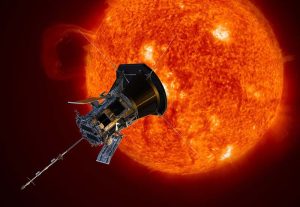Statewide Iowa — Sure, it was sweltering in Iowa last week, but University of Iowa researchers are doing groundbreaking studies on an environment that’s beyond scorching using data from a spacecraft that’s orbiting the sun.
U of I physics and astronomy professor Jasper Halekas is the lead author of a report on the sun’s electric field and the solar wind that flows outward from our star. Halekas compares that flow to an earthly waterway.
Fluctuations in that solar wind, like a solar flare, can disrupt our power grid, our satellites, and much of our communications on Earth everything from cell phone calls to GPS navigation to TV and radio broadcasts. The Parker Solar Probe has made eight orbits of the sun so far, and each orbit takes about three months to complete. Remember, the sun is huge.
The spacecraft has gotten within nine-million miles of the sun, which may not sound all that close, but temperatures on the side facing the sun are peaking around one-thousand degrees. It’s a robotic explorer like no other in history, and no, it won’t melt.
The research they’re doing is historic, he says, as these are the first definitive measurements anyone’s ever been able to make of the sun’s electric field.
Launched in 2018, the NASA funded mission is scheduled to run through at least 2025 as the spacecraft should be able to make about 20 orbits around the sun, drawing ever closer, at a speed that should top off around 430-thousand miles an hour. It’s the first NASA spacecraft named after someone who’s still alive, 94 year-old Eugene Parker, an astrophysicist and professor emeritus at the University of Chicago, who first did key research in solar physics in the 1950s.













